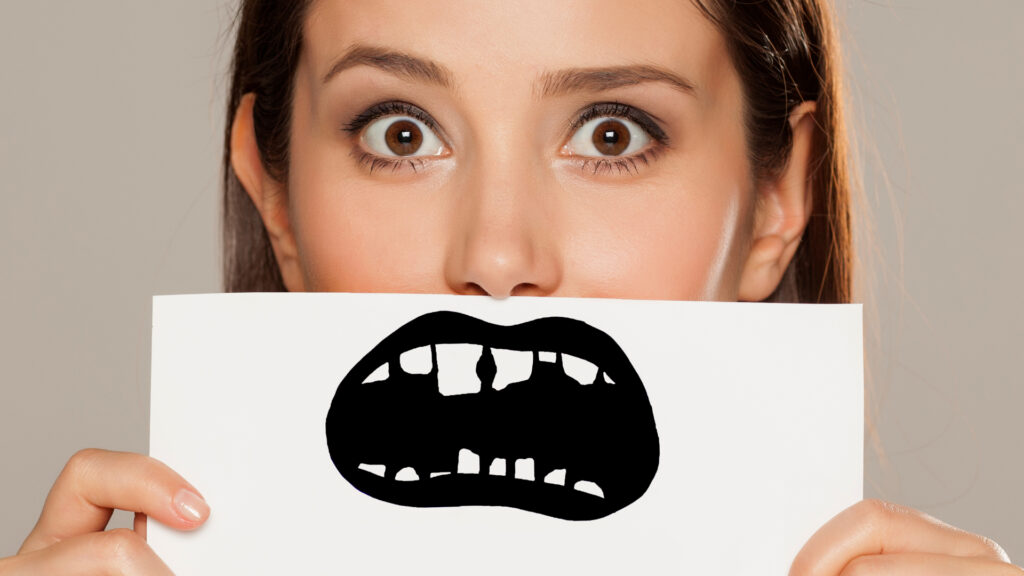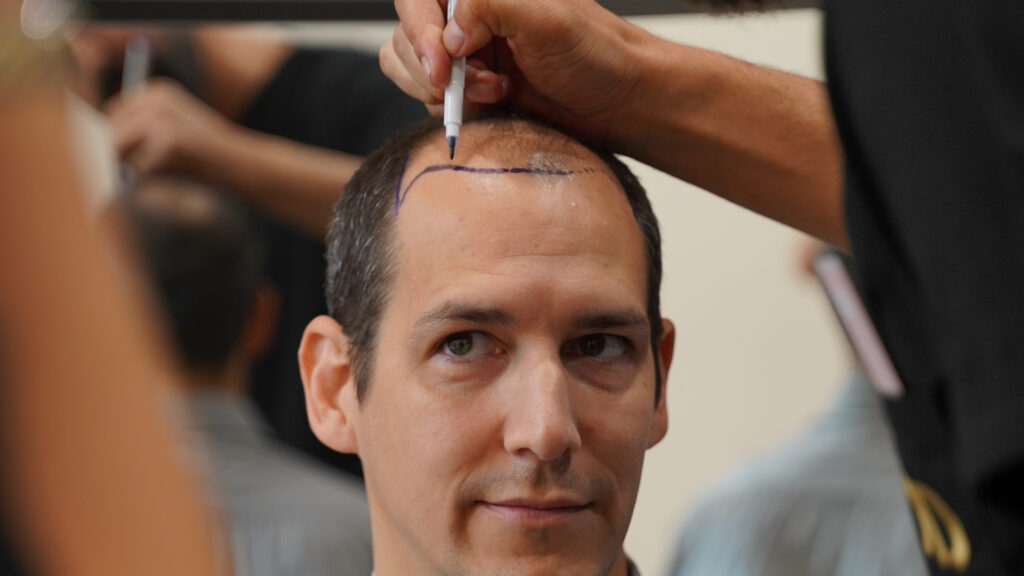Gingival recession, a condition where the gums recede and expose more of the tooth or its root, should be taken seriously. Not only does it impact the aesthetics of your smile, but it can also lead to significant oral health issues, such as increased tooth sensitivity and even long-term tooth loss. Gum grafting is a proven solution to address this problem.
If you are considering gum grafting, whether to restore a harmonious smile or maintain your teeth’s health, it’s crucial to understand the procedure, its benefits, costs, and potential alternatives.
This comprehensive guide provides an overview of gum grafting to help you make an informed decision about your mouth’s well-being.

Indications for Gum Grafting
Gum grafting is recommended for treating gingival recession, where receding gums expose teeth’ roots. It can also strengthen weakened gums or increase the amount of keratinised tissue around the teeth.
Additionally, gum grafting helps prevent peri-implantitis, a potential complication following dental implant placement. This procedure protects natural teeth and implants by improving oral health and aesthetics.

Treating Gingival Recession
Gingival recession can be caused by poor dental hygiene, over-aggressive brushing, or periodontal disease. It exposes the roots of the teeth, leading to tooth sensitivity, increased risk of cavities, and an unattractive smile.
Gum grafting aims to cover the exposed root, protect the tooth, reduce sensitivity, and enhance the smile’s appearance.

Strengthening Damaged Gums
Gum grafting is crucial for strengthening damaged gums by creating or increasing the area of keratinised tissue, which is more resistant and protective for the teeth.
This procedure particularly benefits patients with thin, fragile, or eroded gums. The graft provides a strong, healthy foundation for the teeth, helping to prevent future recession or damage.

Reducing the Risk of Peri-Implantitis
Peri-implantitis, a periodontal disease affecting the tissue around dental implants, can occur after implant placement. Gum grafting around implants helps prevent this complication by increasing the quantity and quality of gum tissue.
The graft ensures better adhesion and protection around the implant, reducing the risk of inflammation, infection, and implant loss. Gum grafting is an essential preventive measure that promotes the long-term durability and success of dental implants.

How Does Gum Grafting Work?
The gum grafting process begins with a thorough assessment by a dental surgeon to determine the extent of gum recession and evaluate the overall health of the patient’s gums.
Depending on the patient’s specific needs, several techniques may be considered.

Buried Connective Tissue Grafting
Buried connective tissue grafting involves taking connective tissue from the patient’s palate and burying it under the gum in the area to be treated. This technique improves the thickness and strength of the gum tissue, providing better protection for the teeth and roots while preserving the smile’s aesthetics.
One of the main advantages of this method is its natural result. Because the graft is placed under the existing gum tissue, it is not visible, avoiding noticeable scarring or significant changes in the smile’s appearance.

Epithelial-Conjunctival Grafting
Epithelial-conjunctive grafting involves harvesting a graft comprising both connective tissue and part of the epithelial layer of the palate. The main aim is to increase the amount of keratinised tissue around the teeth, thereby strengthening the gums and providing better protection against recession and other periodontal problems.
However, this technique has an aesthetic disadvantage. The difference in colour between the grafted tissue and the natural gingiva can be visible, affecting the harmony of the smile. It is, therefore, generally recommended for less exposed areas where functionality and gum health take precedence over aesthetics.

The Displaced Flap Technique
The displaced flap technique uses good-quality gingiva close to the area to be treated. Adjacent gum tissue is gently moved to cover the affected area, eliminating the need for palatal harvesting.
This method is particularly useful for clearing impacted canines and implant treatment plans. It can be combined with buried connective tissue grafts to improve volume and aesthetics.
This approach’s advantage is that it reduces the complexity and discomfort associated with tissue harvesting while offering high-quality aesthetic and functional results. Therefore, it is an interesting option to consider when planning gum grafting treatments.

The Advantages of Gum Grafting
Gum grafting is a beneficial procedure that offers a number of important advantages for oral health and smile aesthetics:
- Pain relief: Gum recession exposes the roots of teeth, making them more sensitive to heat, cold, and touch, which can cause considerable discomfort. Gum grafting reduces sensitivity and pain by covering these exposed areas, allowing patients to regain comfort in their daily lives, particularly when eating and drinking.
- Protection for weakened teeth: When gums recede, tooth roots become more vulnerable to erosion, decay, and damage. Gum grafts provide extra protection against these risks by covering exposed areas. This helps preserve teeth’ long-term health, avoiding complications that may require more complex treatment or even lead to tooth loss.
- Improving the appearance of the gums: Gum recession can affect the smile’s aesthetics by giving the impression of long or uneven teeth. Gum grafting helps restore a natural, harmonious gum contour, significantly improving the smile’s appearance. This is particularly important for people concerned about their smile’s aesthetics, as it helps boost their self-confidence and well-being.

After the Operation: Post-Operative Advice
Rest and Precautions for the First Few Days
Rest and avoid strenuous physical activity for the first few days after the transplant. Sudden movements or overexertion can cause bleeding or displacement of the graft. Keep your head elevated to reduce swelling and avoid hard, spicy, very hot, or very cold foods that could irritate the treated area.

Pain Management
Feeling pain or discomfort in the treated area is normal after anaesthesia. Your dentist or periodontist will prescribe painkillers to manage the pain. Swelling and bruising may also occur, but these should gradually diminish in the days following the procedure.
Oral Hygiene
Avoid brushing the grafted area directly for the first few days to avoid disrupting the healing process.

Your dentist may advise using an antibacterial mouthwash or a specific brushing technique to clean the area without damaging it. Continue brushing and flossing your other teeth, carefully avoiding the operated area.

The cost of a gum graft
| Periodontal surgery | |
| – Flap surgery (per quadrant) | 325 € |
| – Flap surgery with bone graft (per quadrant) | 325 € |
| – Guided tissue regeneration (GTR) (per tooth) | 120 € |
| – Crown lengthening (per tooth) | 35 € |
| Gingival grafts | |
| – Free gingival graft (per site) | 750 € |
| – Connective tissue gingival graft (per site) | 750 € |

Why carry out a gum graft in Turkey?
Turkey is a destination of choice for dental treatment, particularly gum grafts. Here are the main reasons why:
- Quality dental clinics: state-of-the-art equipment, advanced technologies and dentists trained to international standards.
- Competitive rates: more affordable than in Europe or North America, without compromising the quality of care.
- All-inclusive packages: treatment, accommodation and sometimes transport and translation included, for a stress-free experience.
When you choose Turkey for your gum graft, you benefit from high-quality care at an attractive price and comprehensive treatment.
Sources :
4299 vues
0 commentaires
0






Il n'y a pas de commentaires pour le moment.